How to Best Prepare for Your Adventure in the Pamirs
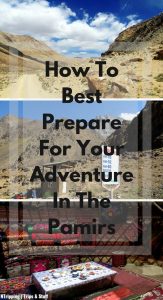
The magnificent Pamirs are full of rewarding moments and incredible views. However, they also offer a host of challenges for any traveler.
The best advice I can give you is this: know where you’re going!
Study the route and understand the perils of the Pamir Highway.
Prepare for the life-changing experiences, which the Pamir Mountains will offer you.
But most importantly, come with an open mind and let the Pamirs enchant you.
To help you get ready for the adventure of a lifetime, I’ve compiled several practical tips about how to best prepare, both mentally and physically, as well as purely logistically, and have an unforgettable journey on one of the most epic drives imaginable through the Pamirs.
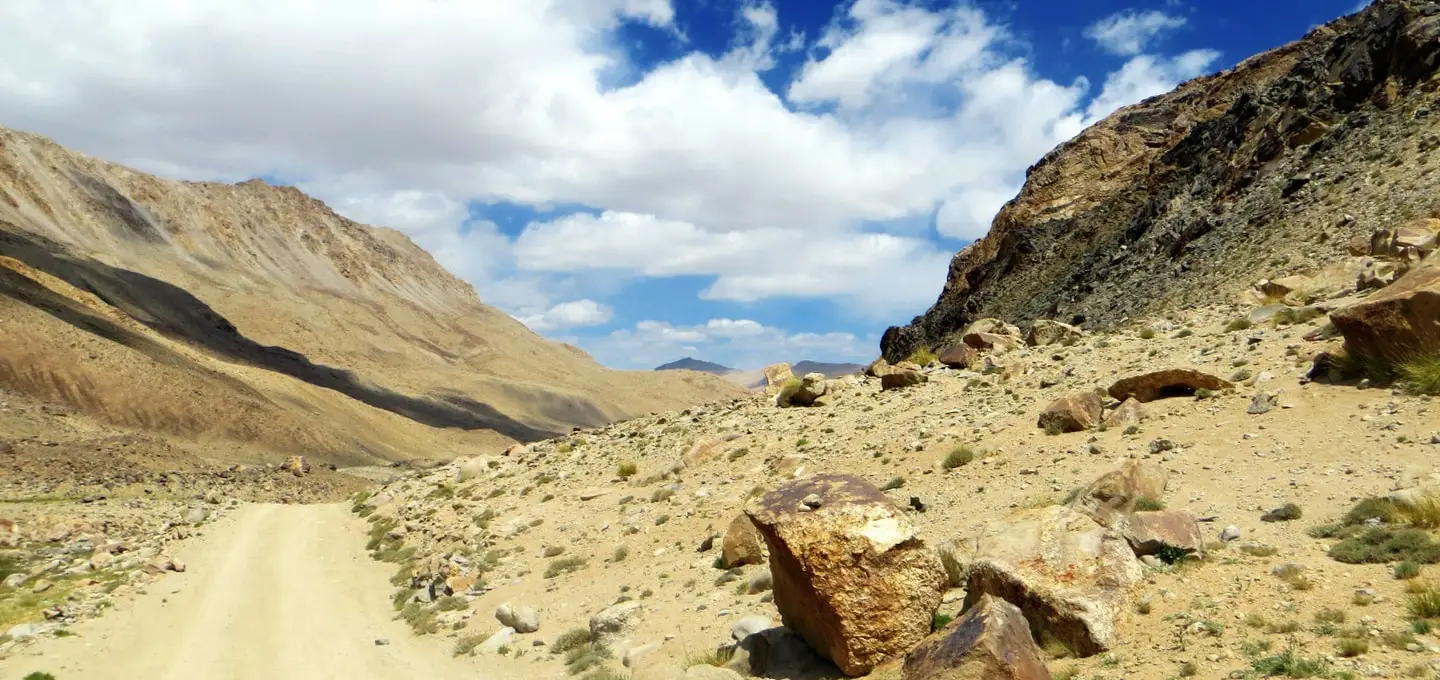
The Weather: When Is the Best Time to Go to the Pamirs
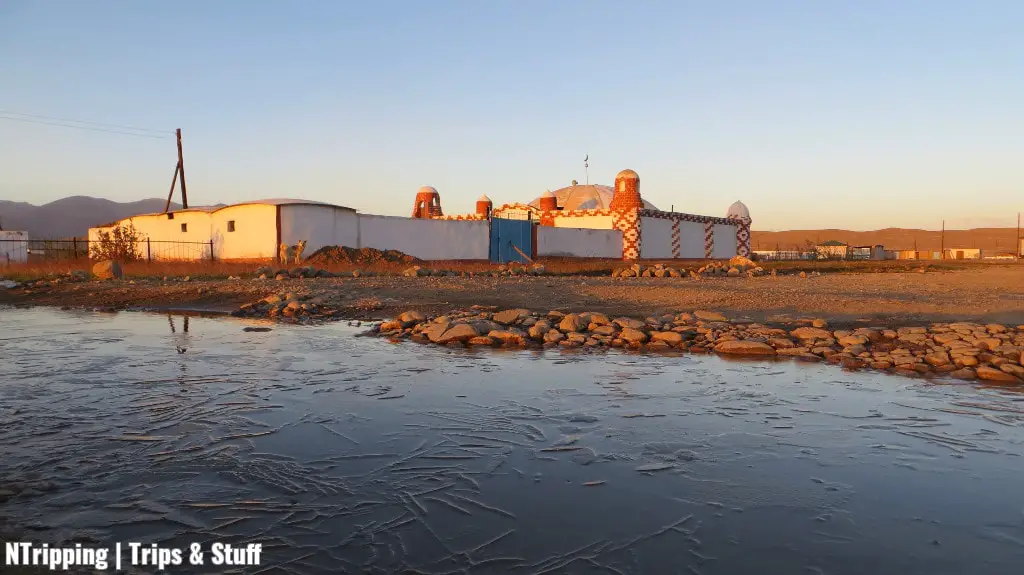
The summer between June and August would be the best time for your trip to the Pamirs. You want to avoid the snow and the rain in the other seasons as roads become unpassable.
Still, even in summer, the weather can be unpredictable and quickly change at high altitudes.
For example, the ground might be still too cold for the nomads to build their yurt camps in June. If overnighting in a yurt is something you definitely want to do, come in mid-summer.
In July, a few weeks before we traveled, roads were closed after heavy rains had caused landslides.
In mid-August, we woke up to frozen streams in the village of Alichur in the High Pamirs. It’s the place, where the lowest temperature in Tajikistan was measured.
So while you have to prepare for hot summer temperatures around 35°C – 40°C (95°F – 104°F) at the beginning and at the end of your journey, also prepare for temperatures in the much lower range. In the High Pamirs, it would be around 5°C (41°F) in the early mornings and up to 25°C (77°F) with scorching sun during the day.
The Logistics: How to Best Tackle the Treacherous Roads Through the Pamirs
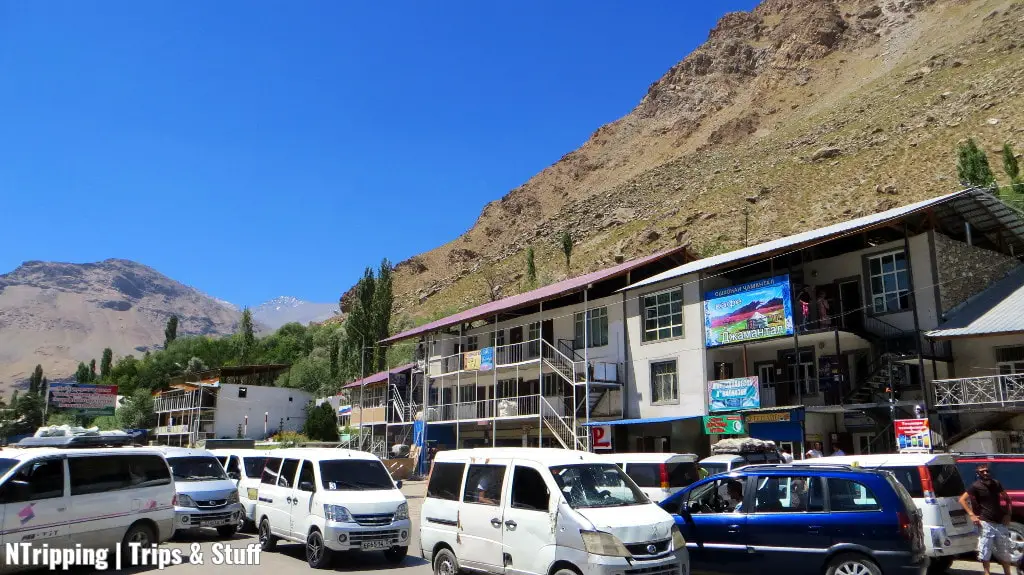
The distances in the Pamirs are huge.
Several people assumed we hiked. Hell, no! The whole journey is approximately 2000 km – how could we? It’s possible to do short one- or two-day hikes from one of the towns or villages, but the Pamirs are a road trip destination.
The scale of the mountains is hard to imagine and the kilometres you’ll have to cover each day are in the 150 – 200 range. However, the conditions of the roads will not allow for speeds of over 60 km/h – and that’s on a good stretch! Hence, you’ll need several days of driving to cross the mountain range.
The main transportation artery through the Pamirs is the Pamir Highway or M-41. However, don’t let the name fool you. Its condition has nothing to do with the highways in your home country!
You’ll need a lot of experience in off-road driving and a reliable 4WD vehicle to tackle the treacherous roads. Moreover, keep in mind, that a lot of the highlights of the Pamirs are located off the main road. The tracks through the alpine desert will challenge even the most experienced drivers.
Imagine unexpected and extremely dangerous landslides whenever it rains, and you have the full picture.
Of course, it’s possible to drive on a motorbike or cycle the roads through the Pamirs as well, but this will require a completely different level of preparation and effort.
According to bikers we met along the way, it’s their version of paradise. In my humble opinion, though, they were spending their time covering as many kilometers per day as possible instead of venturing off the main road and truly exploring the Pamirs.
Public transportation is practically non-existent in this part of the world apart from shared taxis or marshrutkas without a strict timetable. We met a few hitchhikers who had relative success in finding short-distance rides. However, these options are very inflexible and you’ll be relying on many external factors.
Having in mind how difficult it is to drive these roads and how hard it is to find a ride, I would suggest you hire an experienced local driver or join an organized tour. Don’t worry, the tours aren’t your typical huge bus tours, but rather two or three SUVs driving together as a group.
The Itinerary: Which Direction to Go to Avoid Altitude Sickness
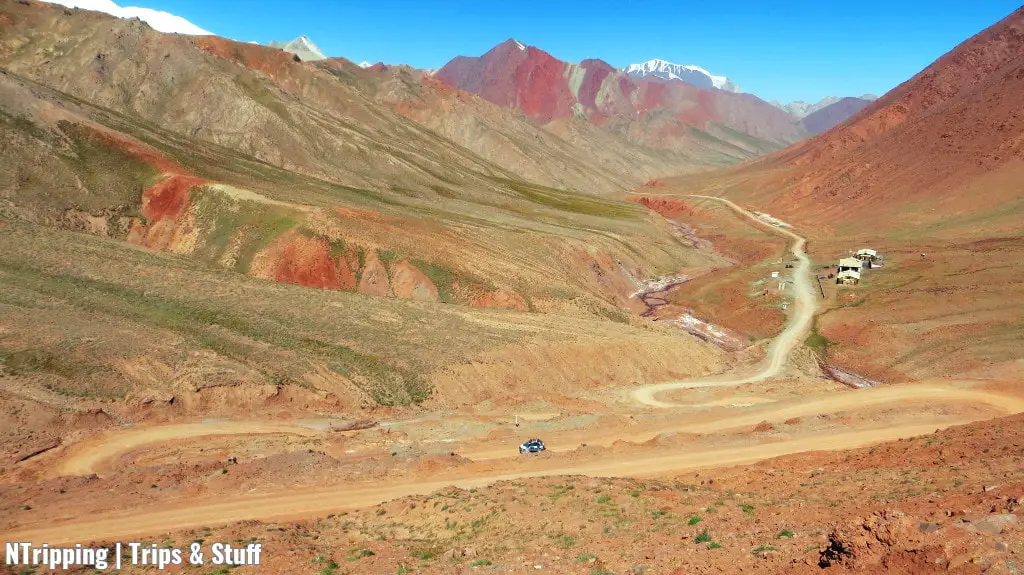
Starting and Finishing Points
The Pamir Highway stretches roughly from Dushanbe (the capital of Tajikistan) to Osh (the second largest city of Kyrgyzstan). The most spectacular part of the road is between Khorog, Tajikistan and Sary-Tash, Kyrgyzstan.
You can follow the M-41 in either direction: start in Kyrgyzstan and finish in Tajikistan or vice versa. The first version is more popular, but the latter is actually better to ride to avoid altitude sickness.
We started our tour in Dushanbe. The capital of Tajikistan is easy to reach from its neighbouring countries and from several hub airports: Dubai, Istanbul, and Moscow.
From Osh, it’s easiest to first reach Kyrgyzstan’s capital Bishkek and then continue your journey to other Central Asian destinations, as well as the hubs I’ve just mentioned.
Visas and Crossings
The visa for Tajikistan is easily obtainable as many nationalities are eligible for an e-visa. The application process is fast and you don’t need any special documents. Don’t forget to apply for the additional GBAO permit! Without it, you can’t go into the Pamirs. You can find all the relevant information in the FAQ section of the e-visa website.
If you’re not part of a tour, make several copies of your passport and visa. At every checkpoint, you can hand them to the officials and make passing easier. We crossed about 8 checkpoints, most of them at the beginning of the trip.
For Kyrgyzstan, holders of passports from many countries don’t need a visa for visits of up to 60 days.
The border crossing with Kyrgyzstan is the second highest in the world and is located in an area with spectacular views. Hence, we didn’t mind that the officials weren’t in a hurry to let us through. The no man’s land area between the borders stretches for 25 km and features some of the most jaw-dropping views along the Pamir Highway.
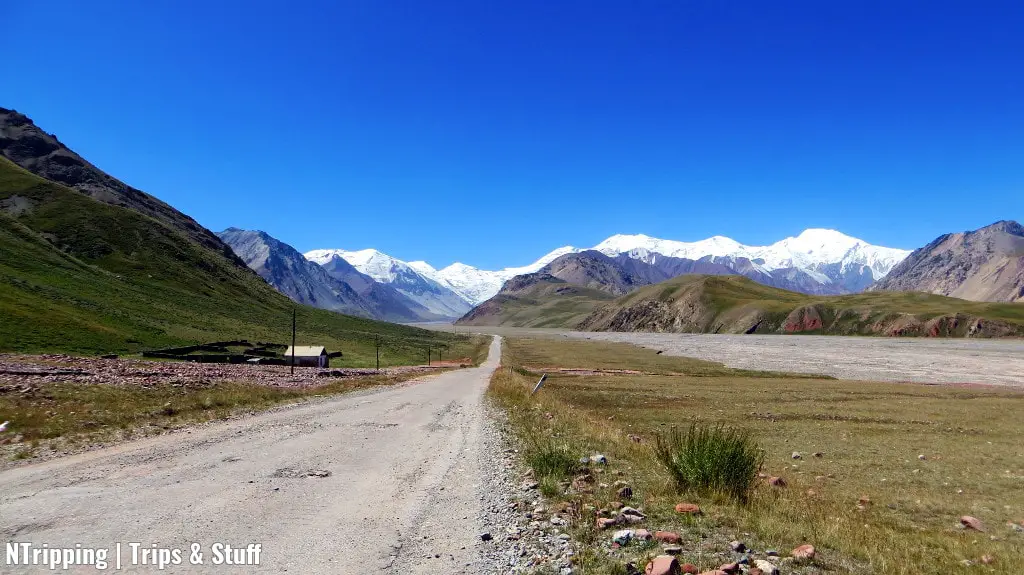
The Journey
This is where we stayed during our road trip.
- Dushanbe (hotel – not part of the tour),
- Kalaikhum (homestay, but hotels are available),
- Khorog (2 nights in a hotel),
- Yamg (homestay, built for tourists),
- Langar (homestay, built for tourists),
- Alichur (homestay),
- Murghab (2 nights in the only hotel in town),
- Karakul (2 nights in a homestay),
- Sary-Mogul (2 nights in a homestay / 1 night in a homestay + 1 night in a yurt), and
- Osh (hotel).
Of all the places we visited and stayed in, I would definitely recommend skipping Murghab. We were lucky to be there during the Chabysh Festival, but without it, there’s nothing much to do. The distance between Alichur and Karakul can be covered in a day. Stop in Murghab for lunch, restock on snacks and drinks, and continue on M-41.
The Accommodations: Where to Rest Your Body After a Long Day of Exploration
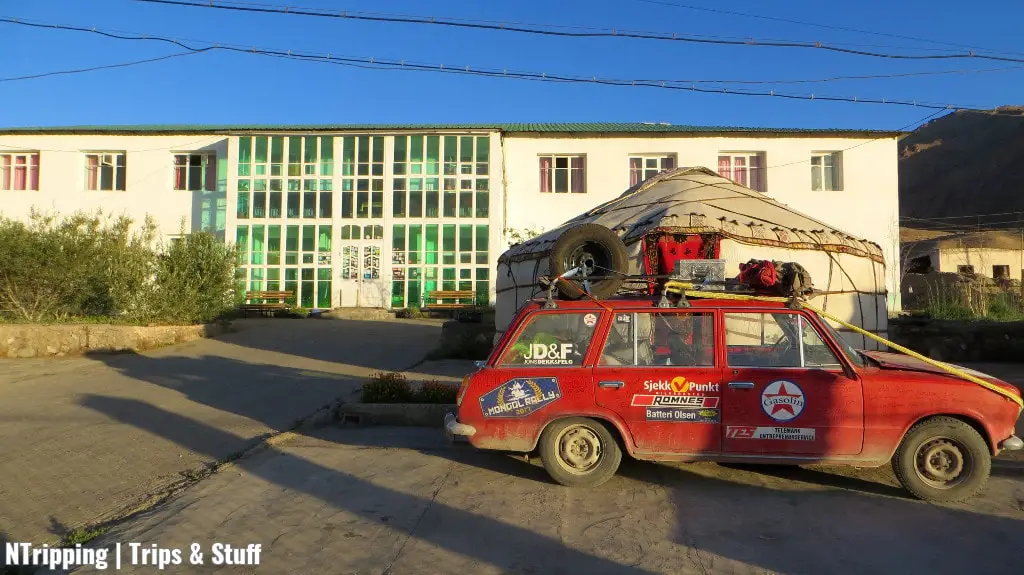
The accommodations in the Pamirs are not for people looking for a luxurious experience.
Both hotels and homestays offer the most basic of comforts.
Hotels are only available in Kalaikhum, Khorog, and Murghab.
In Murghab, there’s just one hotel in the whole town. To be honest, this was the only place, which didn’t feel clean enough. But between two stops without showers, this was a compromise we had to make.
While in other destinations you might interact with the locals during the day and retrieve to your comfortable hotel room for the night when traveling through the Pamirs, most of your accommodations would be homestays.
The Pamir Highway is a part of one of the routes of the famous Silk Road, so merchants and travelers have traversed these mountains for centuries. The local people have a tradition of offering their homes and their food to passengers.
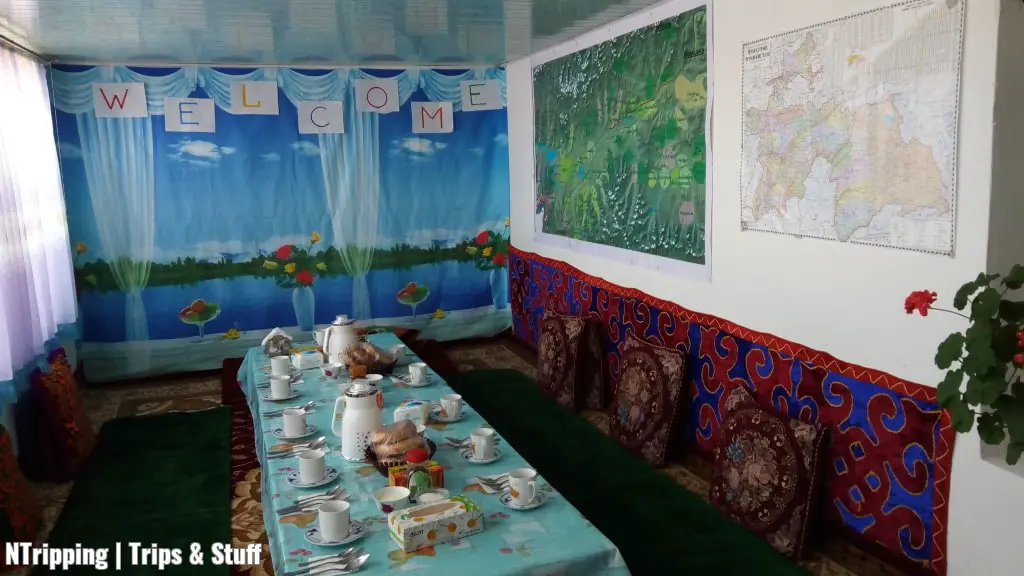
In Tajikistan, we slept in several very basic homestays and shared the food our hosts prepared for us. At some of the accommodations, we slept on thin mattresses directly on the floor. In others, there were beds, which have seen better days.
Despite the lack of running water, electricity, and indoor toilets, the hospitality and the smiles of the hosts made our stays pleasant and unforgettable. It’s easy to ignore the lack of comfort when your head is spinning with images of magnificent views, breathtaking peaks, stunning nature, as well as stories told by the kind and welcoming hosts.
The homestays in Yamg (alternatively spelled Vrang) and Langar were specially built for travelers. They offered clean, indoor Western toilets, as well as hot showers.
In Alichur and Karakul, the homestays featured outside toilets and had no running water or electricity. Car batteries provide the possibility to charge devices for several hours a day.
Overnighting in yurts was also possible in Alichur and Murghab, but we didn’t try it.
After the border crossing with Kyrgyzstan, we stayed in Sary Mogul in a very comfortable homestay. It offered electricity and even good Wi-Fi, as well as hot showers and toilets in a small building outside the main house.
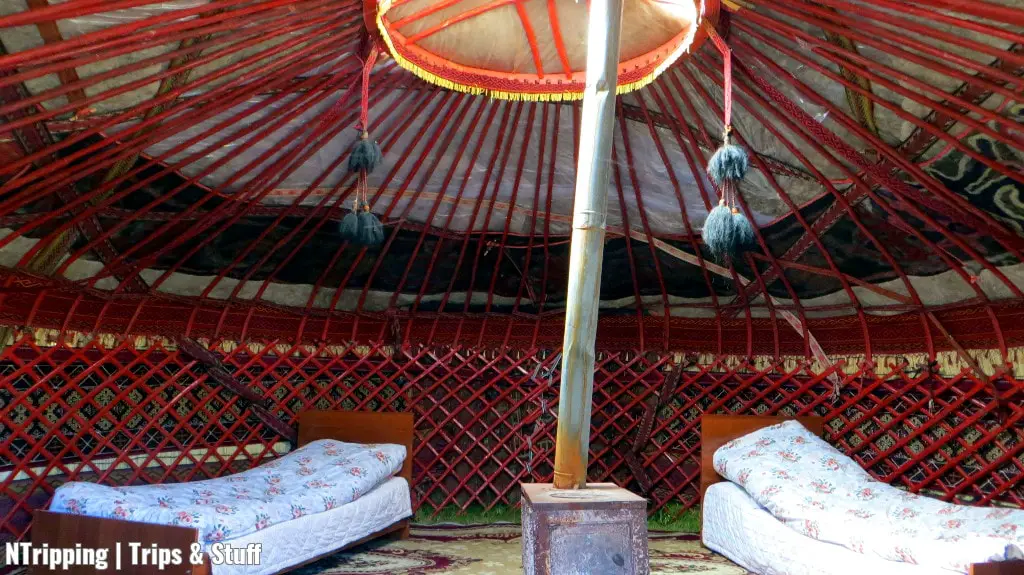
The most adventurous among us spent the last night in the Pamirs in a yurt camp at the foot of Lenin Peak. An outdoor toilet and even a shower were available to them. Their yurt had proper beds and a stove. They shared with us that the inside temperature has been pleasant during the night despite the fact that it snowed!
A curious thing about reservations in homestays happened several times. Even though we had pre-arranged accommodation, our rooms were given to travelers who arrived before us. It’s just the way things work in the Pamirs. The group had to split and spend a few nights in different homestays but it was never a problem finding alternatives.
All showers and toilets in the accommodations we used were relatively clean. The outside ones had what we called an aroma, which was unpleasant but bearable.
The longest we went without a shower was two days. Fortunately, this happened in the High Pamirs where the temperatures were lower than at the beginning and at the end of the trip, so we didn’t sweat a lot.
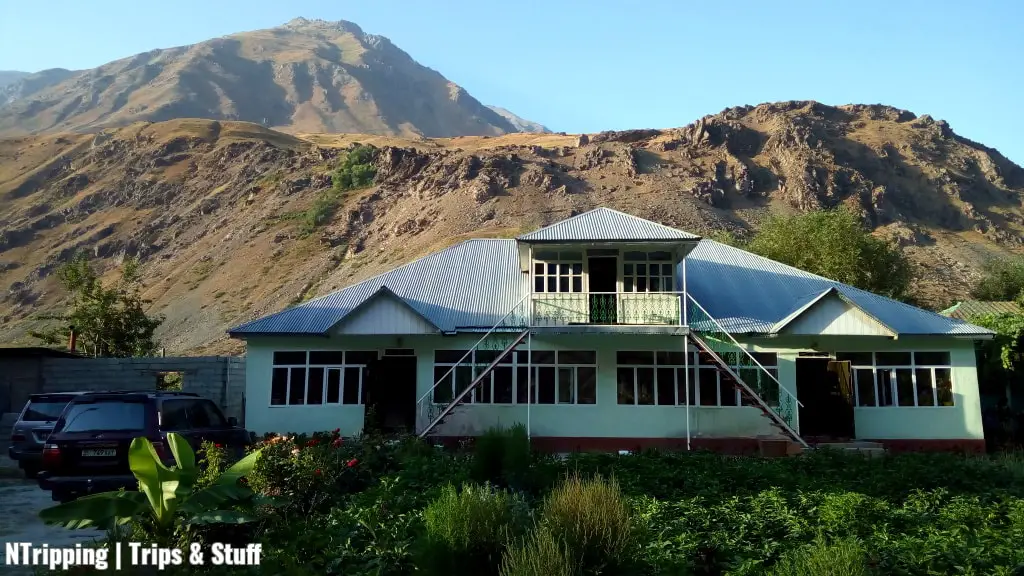
On the other hand, the fierce winds at higher altitudes managed to blow fine dust into every cavity. Imagine taking your socks off and finding dust between your toes… Unpleasant indeed but nothing a few wet wipes couldn’t solve!
Food: What to Expect on Your Table During the Journey Through the Pamirs
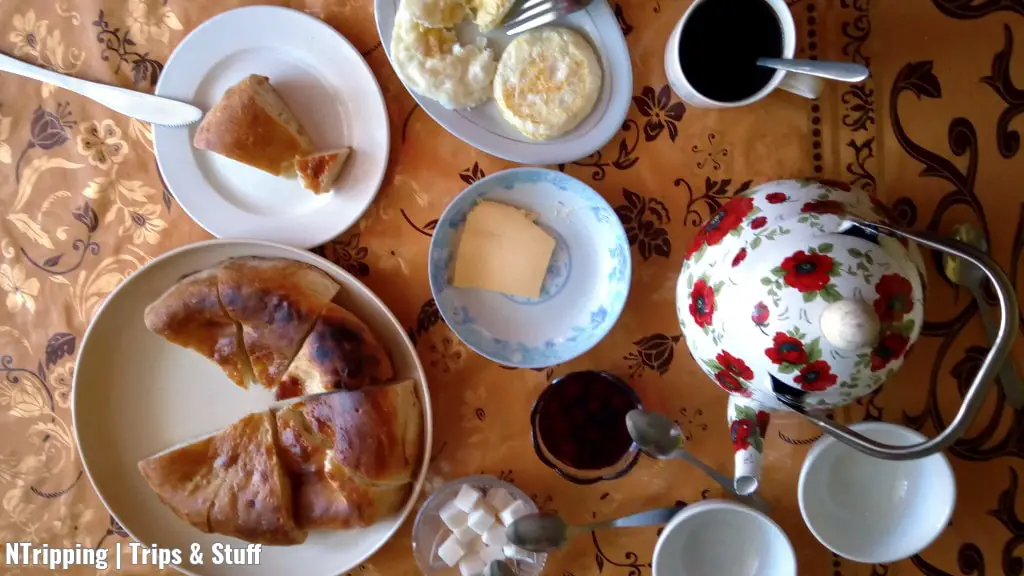
Tasteless.
That is the best description I have of the food in the Pamirs. Despite the fact that the meat and the vegetables were freshly prepared, no seasoning was used and they were not cooked properly. To make things even more difficult to swallow, the bread was usually dry to the point that it was as hard as a brick.
The cuisine in the Pamirs was definitely not the highlight of this trip. Very few places served food that was passable. Only once or twice, it was truly delicious.
The meal we enjoyed the most in the Pamirs was a huge plate of extremely greasy spare ribs – from the yak. Most of the time, sadly, the meat tasted like rubber.
You have to understand, however, that most of the food was prepared on open fires in a region of the world where almost no trees grow.
In the towns we passed – Kalaikhum, Khorog, and Murghab – naturally, the choice was better than in the homestays in the small villages.
The hotel stays usually included breakfast. In homestays, dinner and breakfast, sometimes also lunch, were included in the price. During days with long drives, we ate our lunches at road restaurants. The menu was limited to only two or three options. Usually, these were soups or stews and the rice dish plov. The only drink served was tea.
The hygiene in the road eateries was sometimes questionable but fortunately, no one from our group had a problem with the food. However, the toilets along the road were a disaster. It was safer and easier to relieve yourself by the road behind a rock or a bush if you could find one…
Curiously enough, the moment we crossed the border with Kyrgyzstan, everything changed – not just the scenery but also the taste of the food. Not only did the desolate Pamir Mountains pull back to give way to the green Alay Valley, but also the cuisine became much better.
We were still eating the same dishes, prepared with the same ingredients, but they were cooked more skilfully and with the right seasonings, hence the huge – and highly appreciated! – difference.
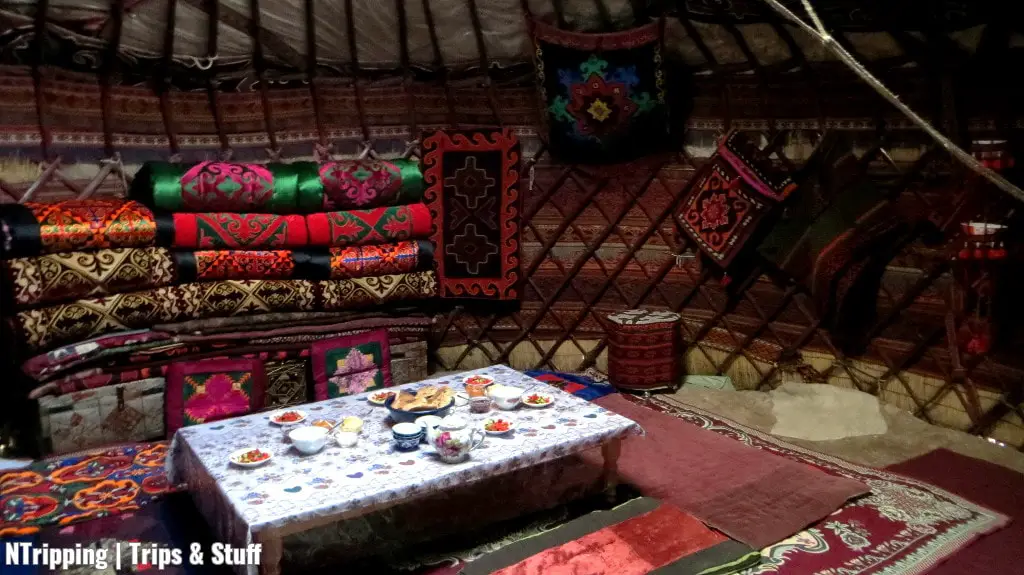
Packing List: What to Bring in Your Survival Kit for the Best Possible Experience
No matter how well-traveled and experienced you are, please read the following lines. This has nothing to do with trying to sell you a few items via affiliate links!
What You Absolutely Must Take with You
Cash
Tajikistan is a cash-only economy. Make sure you withdraw or exchange enough local currency in Dushanbe, Khalaikhum, or Khorog. The same goes for Kyrgyzstan, although we spent just 4 days in the country and only needed cash in Osh, the final destination of our journey.
Our tour was pre-booked and all meals, accommodations, transportation, and entry fees were included in the price. We made very few additional purchases, things like souvenirs and snacks, and the occasional beer or vodka.
For the whole journey through the Tajikistan part of the Pamirs, I spent less than the 50€ that I withdrew from an ATM in Dushanbe.
In Osh, there’s a whole street of exchange kiosks near the main market. For a whole day of exploration in Kyrgyzstan’s second-largest city, I needed less than the $20 I exchanged in the local currency. This was after the tour was over so I needed to take care of my meals and accommodation myself.
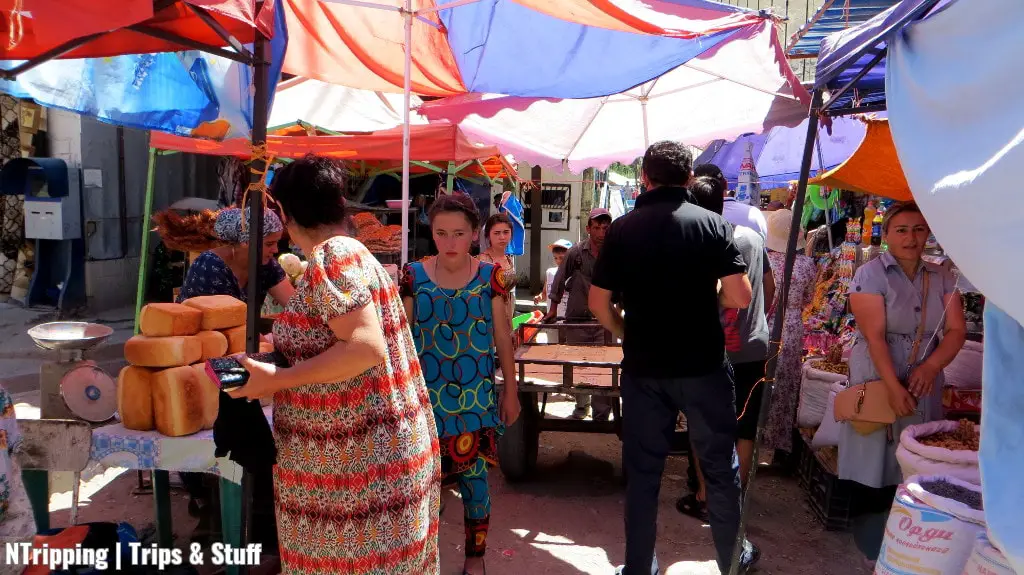
The hotel accepted credit card payments. I arranged to pay 50% of the nightly rate in order to keep the room until the evening when I had to catch a night flight to Bishkek.
Disinfectant (Lots of It!)
Your mother did teach you to wash your hands after using the toilet and before eating your lunch, didn’t she?
Well, without running water, it is a difficult task to complete. Instead, have a sanitizer gel with you to avoid getting sick. In addition to the gel, take a pack of wet wipes for the evenings at homestays without a shower.
Insect Repellent
Your journey will follow the Panj River for quite some time. In summer, it’s the perfect breeding time for mosquitoes. The females will go nuts once they smell your foreign blood.
Seriously, a fellow traveler was bitten on the first night and his ankle swallowed to twice its normal size! If you’re prone to an allergic reaction like this, bring histamine pills with you as well.
In the High Pamirs, you won’t have to worry about bugs. However, the wind, the sun, and especially the dust, will be your enemies if you come unprepared. So read on.
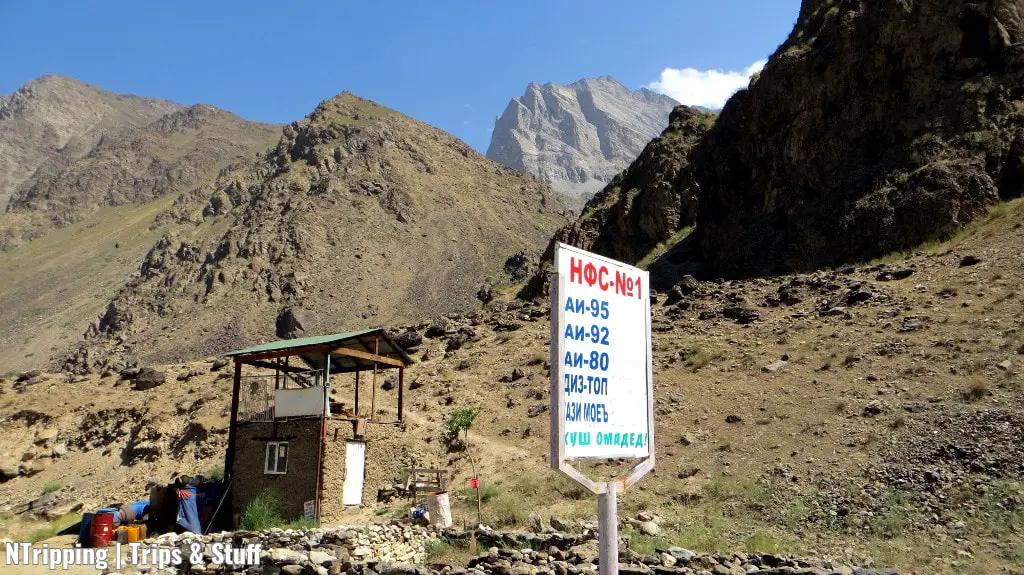
A Nose Spray/Nose Drops
I wouldn’t have been able to breathe without it! My nose was stuffy from the wind and the dust or running like a waterfall in spring from the cold temperatures in the mornings and in the evenings.
An Inhaler
If you have even the slightest respiratory problems, bring an inhaler with you. I used mine extensively throughout the trip. On the contrary, I didn’t need it even once during spring when usually my allergies make my breathing problematic.
A Wound Healing Cream
At high altitudes, the low levels of oxygen prevent wounds from healing at their normal rate. The sneezing from the dust turned my nose into a highly sensitive wound. The healing cream I had packed helped the skin recover much faster.
Furthermore, your lips will suffer greatly from the sun and the wind. You can use the cream for them as well.
Other Medicine
Any prescription medicine you’re taking, you must bring with you. There won’t be any possibility to restock.
Other than that, I’d recommend painkillers, diarrhea, and vomiting pills, histamine tablets, bandages, cold/flu medicine, and probably a wide-range antibiotic just in case.
You might also consider bringing probiotics and vitamins as well since your food during the trip won’t be very nutritious.
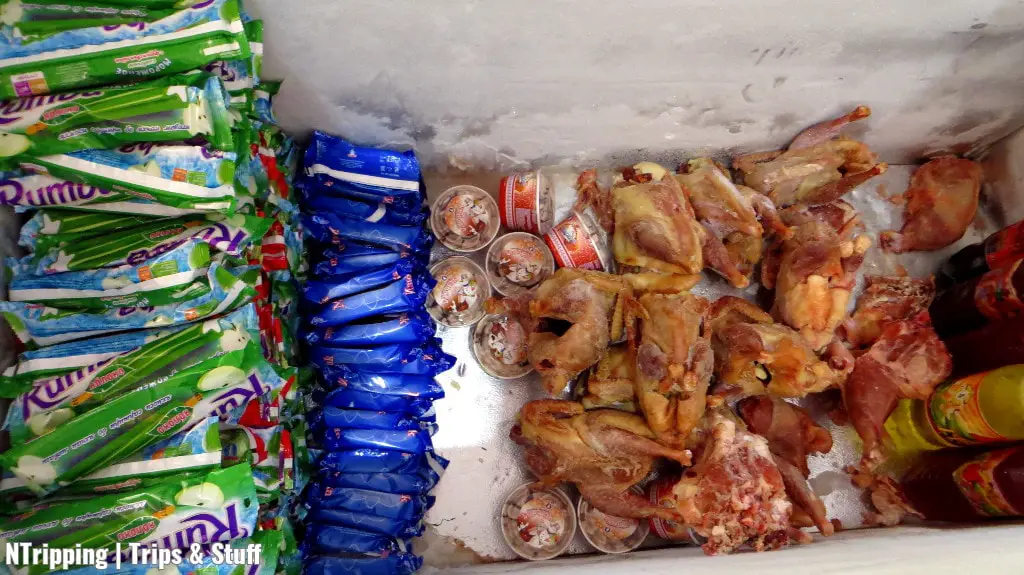
A Scarf and a Hat/Cap
You’ll need to protect your head and your face as best as possible from both the sun and the wind.
Sunscreen and Sunglasses
Picture this:
In August, the UV index in Dubai, UAE was 11. In the Pamirs, it was 13! It doesn’t matter, that the temperature in Dubai was 15+ degrees higher. At high altitudes, the thinner air lets much more UV rays through.
Enough Clothes
Washing in the Pamirs can be tricky. Some of the accommodations don’t even have running water or electricity. Also, plan for temperatures, ranging from 38° C in Dushanbe and Osh to -5° C at night in the High Pamirs. Pack preferably quick-drying, lightweight travel clothes and underwear.
For example, I managed to wash my t-shirts, underwear, hat, and scarf in the hotels we stayed at in Khorog and Murghab, and then finally in Osh. Everything dried during the night.
A Wind-proof Jacket
Especially in the mornings and in the evenings, the wind can be fierce. In addition, the temperatures drop rapidly once the sun is gone. Hence, pack a medium-thick, wind-proof jacket.
Comfortable Shoes
When choosing your footwear, consider not only walking but also the fact, that you’ll be coming in and out of the homestays, each time taking off and putting back on your shoes at the doorstep.
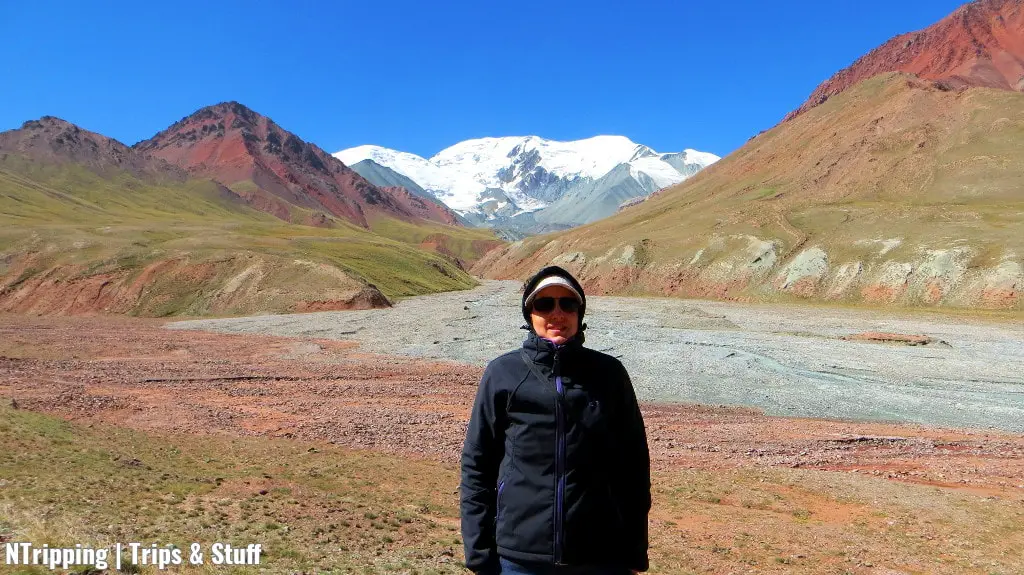
A Sleeping Bag Liner
You might also consider bringing a sleeping bag and/or a pillow with you. You know best what you need for your good night’s sleep. But here’s my advice: bring at least a sleeping bag liner!
Not because the sheets you’ll be provided with are dirty. On the contrary, all the accommodations we slept in were simple but clean. The problem is the laundry is dried in the wind, which saturates the sheets with fine-grained dust.
I personally had problems breathing on several occasions. Once, I woke up in the middle of the night almost suffocating from the dust on the pillowcase. After I removed the pillow from my bed, I could go back to sleep.
A Quick-drying, Lightweight Travel Towel
Most accommodations don’t provide towels so better pack your own.
A Flashlight
Of course, you can use your smartphone but it’s difficult to handle it when using the outside toilet in the dark.
Snacks and Drinks
Stock whenever possible on the way. Sometimes, the food you get at homestays or eateries will be insufficient or tasteless, so better to have a backup. In addition, apart from tea and water, it’s hard to find other drinks.
The best places to satisfy your cravings are Dushanbe, Khorog, and Murghab. The choice is extremely limited, if any, in the other stops you’ll make.
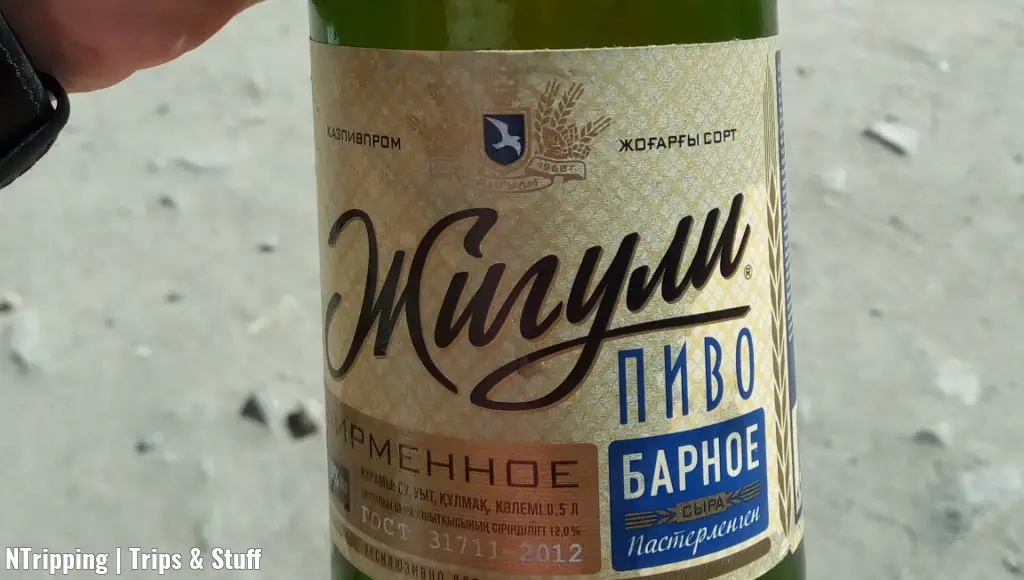
What You Can Leave Back Home
Bathing- or Swimming-suite or Shorts
It is too cold to swim in the lakes. In the hot mineral springs, you’re only allowed to go in naked. In fact, you’ll be fined if you don’t go in naked.
Fashion Clothes, Makeup, and Hair-styling Products
A journey through the Pamirs is not a beauty contest! The wind will be your hair stylist and the only thing you need to put on your face is sunscreen and sunglasses. Besides, in the windy, dusty High Pamirs you’ll want to cover your whole face anyway ;)
What you might want to consider bringing is a hairdryer. The accommodations with running water will also have electricity. That’s where you’ll wash your hair. It can get pretty cold in the evenings so if you have long hair like me, better pack a small, lightweight hair dryer and don’t risk getting sick.
Electronic Devices That Need a Lot of Electricity
Limit yourself to the absolute minimum. A camera and a smartphone are more than sufficient. Moreover, there’s neither Wi-Fi nor reliable mobile coverage in the High Pamirs. Your laptop can wait for your return.
You might want to pack an external battery charger for your phone. However, my advice is to switch your phone to airplane mode to save battery life. You’ll be traveling near or across borders, and through areas without mobile connectivity. Your phone will search for a signal the whole time and drain your battery very quickly otherwise.
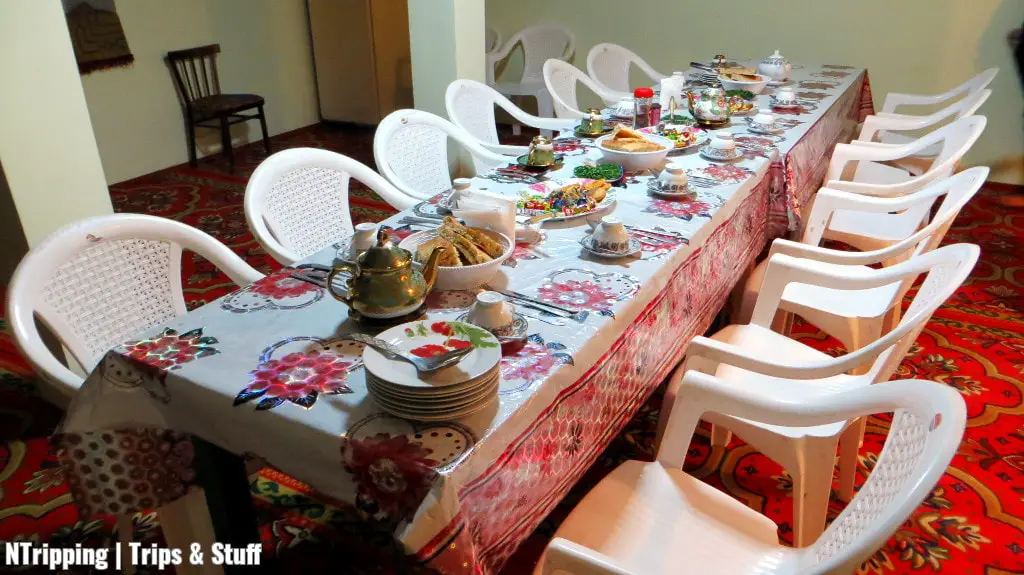
Your Primadonna Attitude
Most of you can ignore this, for the rest, this is what I can tell you:
You’ll get what everyone else gets, and even more than what the locals have. If you’re not happy with it, stay at home! This is not a luxury destination.
The Adventure of Your Lifetime Awaits – Will You Take It?
If you decide to drive through the Pamirs, make sure you’re well prepared, both mentally and physically, for its challenges. Otherwise, instead of having the time of your life, you’ll end up nagging about the lack of comforts or the tasteless food.
Trust me, there’s no easier way to spoil a perfect road trip than to ride it unprepared.
But if you open your mind and let the views take over the negativities of the journey, you’ll end up having an unforgettable experience no one can take away from you.
The magnificent views, the unexpected scenery, the warm hospitality of the people of the Pamirs, as well as sharing stories and overcoming challenges with your fellow travelers will make this trip so special and remarkable, that you’ll be telling your grandchildren about it!
Are your feet itchy and your senses thirsty for an unforgettable escapade through the Pamirs? Let me know in the comments if that’s a destination you would like to visit!
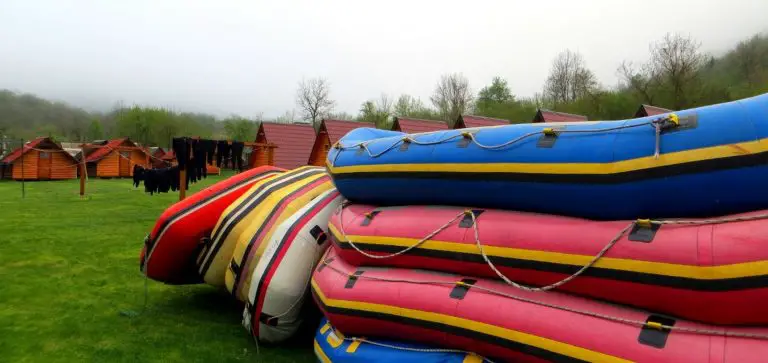
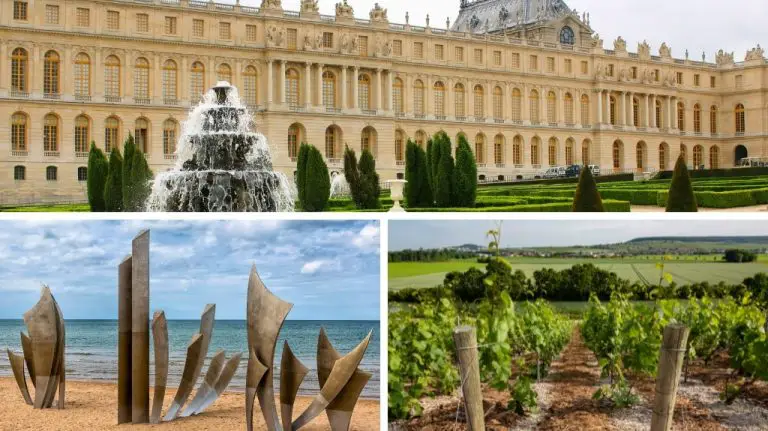
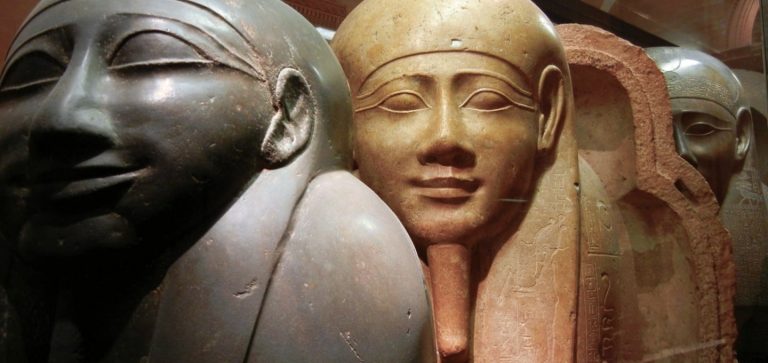
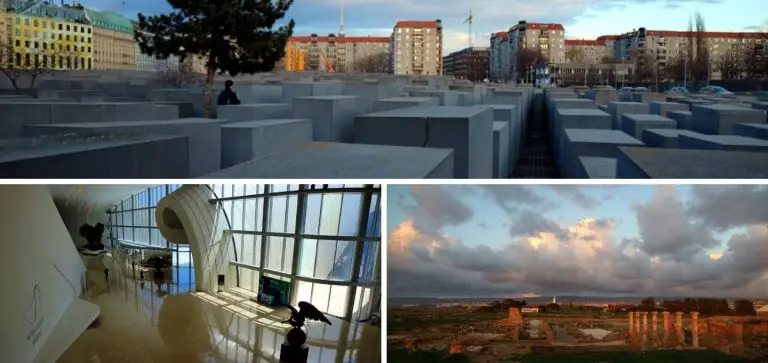
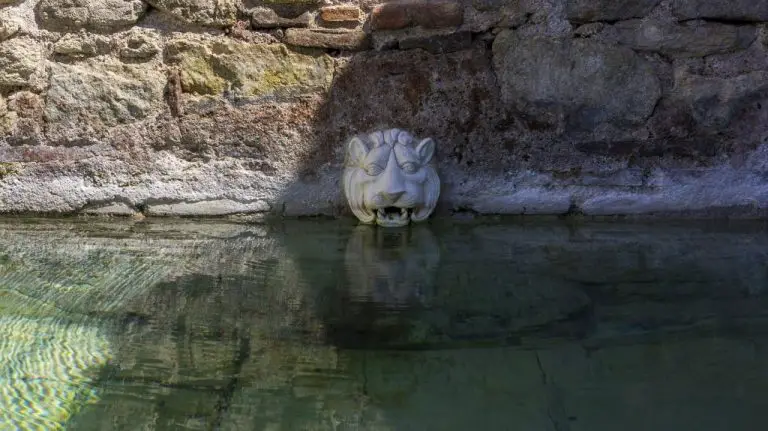

Thank You for such a detailed Post . Helpful Indeed .
Thanks, Girish, glad you liked it :)
Have you been in Tajikistan or Central Asia before?
Cheers and stay safe,
N.
Hi , No Never Been to Central Asia . I am Planning a trip and doing my own research . hopefully Can make it in the near Future. Cheers
If you like road trips, majestic mountains, and friendly people, you’ll love the Pamirs :)
Fingers crossed we can travel again soon! Stay safe :)